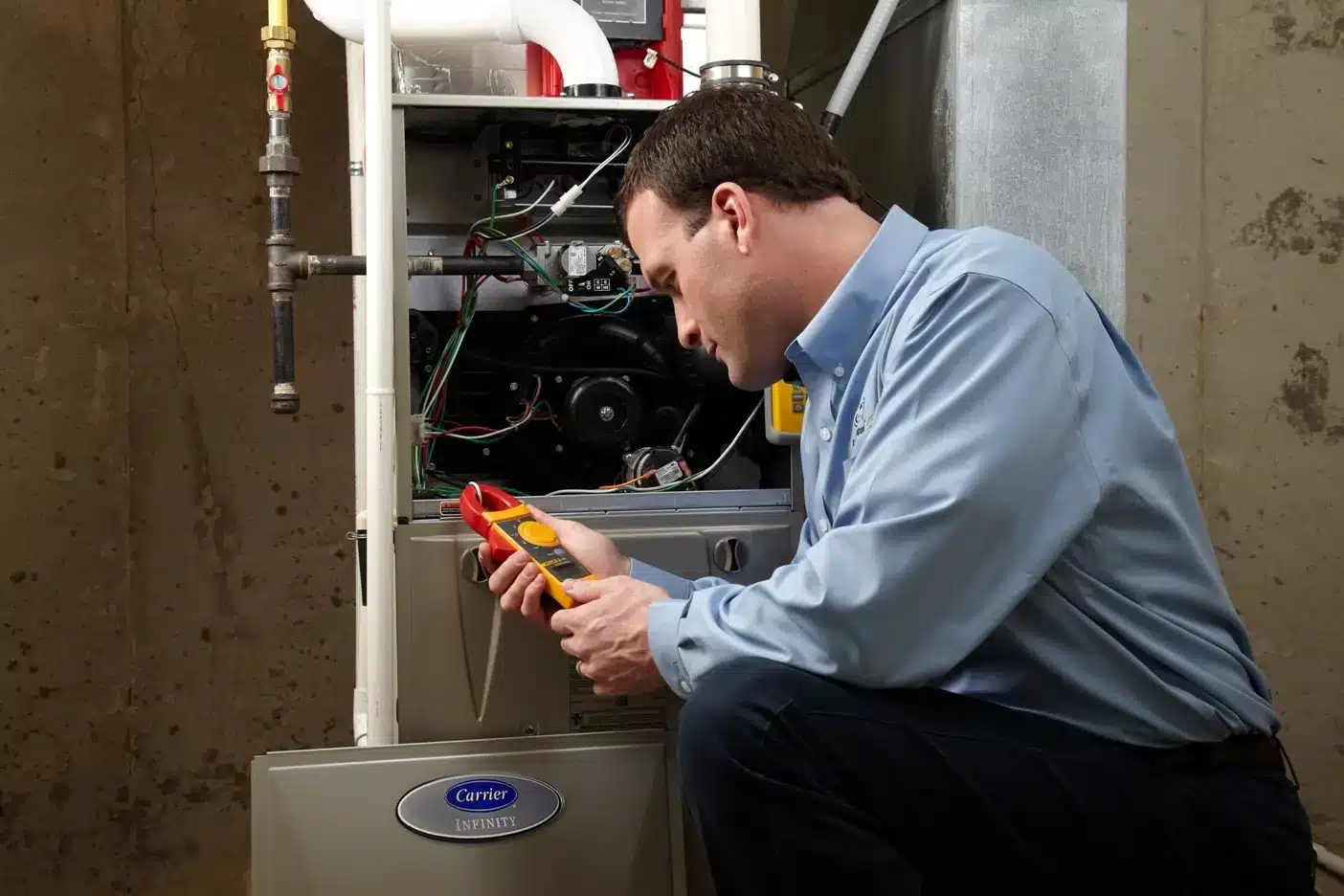Table of Contents

The purchase of a furnace can be a significant financial investment and will have long-term ramifications on both energy bills and maintenance expenses. Making the right selection will save money both ways!
Furnaces come in all shapes and sizes, operate on various fuel sources, and feature smart thermostat compatibility. Below are some helpful insights into the range of furnaces on the market and how you can select the ideal furnace for your home. Also, remember to check your home warranty for potential coverage. Look for great ideas for getting started on this here.
Size
Furnaces that are properly sized not only provide warmth but also enhance energy efficiency. Their proper installation reduces maintenance requirements, impacts moisture levels, and even enhances indoor air quality.
Sizing furnaces may seem complicated, but the end results make the effort well worthwhile. By using an online calculator, you can quickly determine the size needed for your home using input such as square footage, climate zone, and basic information to give an estimate for the required furnace size.
People often buy too small furnaces in an effort to save on purchase or installation costs, hoping this will allow them to save on both. But it’s important to remember that furnaces need to fit your home like Goldilocks’ porridge; too small furnaces won’t provide full house heat, leading them to work overtime to meet temperature demands throughout your home, creating hot and cold spots throughout your home, higher energy bills, and shortening its lifespan over time.
Other variables can also influence your heating requirements, including the orientation and windows in your home. A newer, insulated home with south-facing windows might get more sunlight during wintertime and thus need less of an efficient furnace than older, poorly insulated structures that receive no sun at all.
Energy Efficiency
Furnaces come with different degrees of energy efficiency, and this factor should be the cornerstone of your purchasing decision. More efficient models may cost more upfront but could save money over time in terms of fuel savings.
Find out the efficiency of a furnace by taking a closer look at its Annual Fuel Utilization Efficiency rating (AFUE). A standard gas furnace typically boasts an AFUE rating between 80-97% while high-efficiency models boast up to 97% efficiency.
Apart from selecting the appropriate furnace size for your home, another way to improve heating efficiency is ensuring your limit switch is functioning as intended. A limit switch controls blower speed and prevents overheating in your system to make your system more effective and increase heating efficiencies.
Before selecting a furnace, it’s also wise to consider the price of electricity, natural gas, and oil. All three sources are widely used across the US and can vary in price depending on where you reside – electric furnaces tend to be less costly upfront while gas and oil furnaces cost more to run; you can mitigate these differences with energy-saving upgrades like adding insulation or installing energy-efficient windows that will lower fuel needs for heating your home.
Installation Costs
Furnace systems are an integral component of home heating costs, accounting for as much as 45 percent of energy costs each month. Making smart decisions regarding furnace use will help lower heating expenses significantly.
Size is an essential consideration when purchasing a furnace. Btu (British thermal units) measures how much space can be heated by each furnace; larger houses require more Btus.
Consider which fuel type your furnace uses; gas, propane, and oil are common options. A gas furnace offers lower annual costs while being less harmful to the environment than its alternatives; however, installing a gas line could prove more expensive in rural areas.
If the furnace in a home you are considering comes with a warranty, be sure to ask how you can transfer that warranty correctly so as to preserve its for new owners.
Maintenance for any furnace should include regular inspection and cleaning. You should inspect both the blower motor and fan belts for signs of wear or damage, while belt-driven blowers should be lubricated annually using lightweight machine oil applied directly to their shaft bearings at the blower motor – these markings allow seasonal adjustments to take place more easily. Insulating ductwork may also help prevent heat from escaping unnecessarily while saving energy.
Warranty
Furnace and HVAC warranties can help keep repair costs under control, yet many homeowners remain unaware that certain terms must be fulfilled to qualify for coverage. For instance, many furnace manufacturers require only their authorized service providers for installations, maintenance, and repairs – using any other contractors may void your furnace warranty, rendering it worthless should something go wrong!
Other factors that could void your warranty are failing to register the equipment promptly and not following manufacturer recommendations for the annual servicing of your appliance. Regular service ensures it remains in excellent condition while relieving stress on key components extending their lifespan and decreasing wear on components.
Most major HVAC brands provide online portals where products can be registered at or soon after installation by HVAC contractors, who can then verify if the furnace warranty remains active.
Additionally, most manufacturer warranties require registration within a specified timeframe in order to gain full protection; otherwise, the manufacturer may only offer base coverage (without labor coverage) and refuse transfer to new owners; leaving these subsequent homeowners responsible for paying repair costs themselves.







